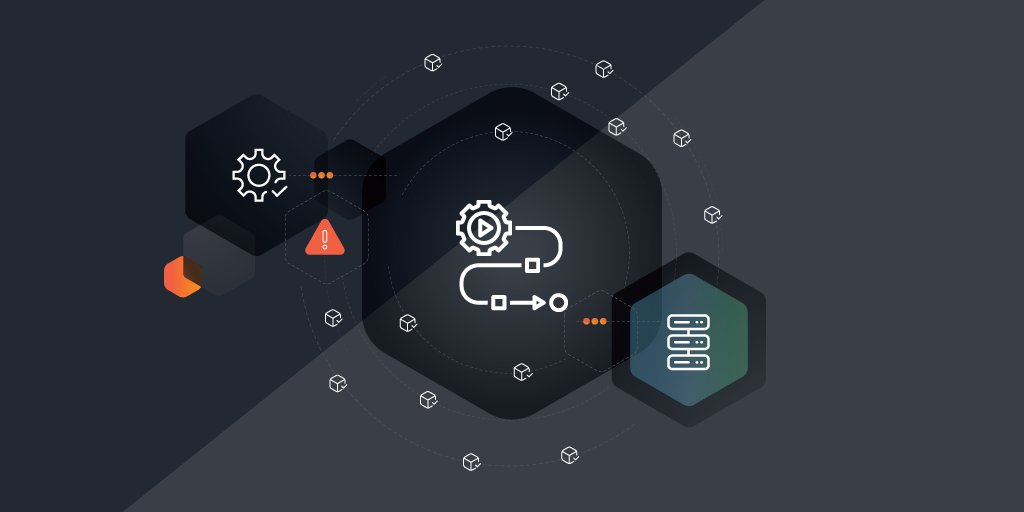
Understanding the importance of incident response procedures sets the foundation for building a resilient cybersecurity strategy. It enables organizations to swiftly address and mitigate the impact of security breaches, protect critical assets, and maintain operational continuity.
Definition of Incident Response
Incident response refers to the organized approach used to address and manage the aftermath of a security breach or cyberattack. It limits damage by quickly identifying and addressing security breaches or IT issues. The primary goal is to mitigate the impact of the incident, ensuring that it doesn’t escalate further in a way that limits damage and reduces recovery time and costs. Effective incident response involves a series of well-defined procedures and protocols designed to identify, manage, and mitigate security incidents promptly.
Why Incident Response Planning is a Crucial for Cybersecurity
Incident response procedures are vital for maintaining your cybersecurity because they provide a structured method for dealing with incidents efficiently. Without this planning, organizations risk prolonged exposure to threats, which can lead to significant data loss, financial damage, and reputational harm. That risk also costs organizations significant amounts of money. In fact, IBM found that organizations with incident response teams and regularly tested incident response plans had an average data breach cost US$ 2.22 million less than organizations without incident response plans and teams. Well-crafted incident response procedures help ensure that all aspects of an incident are managed, from detection to recovery, minimizing the impact on the organization.
Here are examples of critical procedures involved in an incident response plan:
1. Preparation:
- Develop Policies: Establish clear policies that define roles, responsibilities, and procedures for incident response.
- Training and Awareness: Conduct regular training sessions for employees on recognizing and reporting security incidents.
- Toolkits and Resources: Assemble necessary tools and resources, such as incident response software, contact lists, and communication plans.
2. Detection and Analysis:
- Monitor Systems: Implement continuous monitoring tools to detect unusual activities and potential security breaches.
- Incident Triage: Establish a process for categorizing and prioritizing incidents based on their severity and impact.
- Root Cause Analysis: Use forensic techniques to determine the source and nature of the incident.
3. Containment:
- Immediate Actions: Isolate affected systems to prevent the incident from spreading.
- Short-Term Containment: Apply temporary fixes, such as blocking malicious IP addresses or disabling compromised accounts.
- Long-Term Containment: Implement more permanent solutions, like patching vulnerabilities and reconfiguring firewalls.
4. Eradication:
- Remove Threats: Delete malware, close unauthorized access points, and eliminate any remaining traces of the attack.
- System Clean-Up: Restore affected systems to their pre-incident state, ensuring all malicious elements are eradicated.
5. Recovery:
- System Restoration: Bring systems back online carefully to avoid reintroducing the threat.
- Data Recovery: Restore data from backups, ensuring it is clean and uncompromised.
- Testing and Validation: Conduct thorough testing to ensure systems are functioning correctly and securely.
How Should You Conduct a Post-Incident Review:
The Post-Incident Review is a crucial phase in the incident response process, where you and your team thoroughly analyze the incident to understand what happened, how it was handled, and what can be improved. This involves documenting the timeline of events, actions taken, and the effectiveness of the response. The review identifies gaps and weaknesses in the current incident response plan, providing valuable insights for enhancing future responses. Recommendations are made to update policies, improve training, and implement new security measures. By conducting a detailed post-incident review, organizations can learn from their experiences, reducing the likelihood of similar incidents occurring in the future and strengthening their overall cybersecurity posture.
Common Challenges in Incident Response
Common challenges in incident response include inadequate preparation, insufficient resources, and poor coordination among team members. Your organization may struggle with outdated incident response plans or lack the necessary tools to execute its procedures effectively.
Integration of IT Asset Management and Incident Response
How IT Asset Management Supports Incident Response
IT Asset Management (ITAM) plays a crucial role in supporting incident response by providing a comprehensive inventory of all IT assets within an organization. This inventory is essential for identifying affected systems, understanding their configurations, and assessing the potential impact of an incident. By having a detailed record of hardware, software, and network components, IT asset management facilitates a more organized and effective incident response.
Benefits of Integrating ITAM and Incident Response Procedures
Integrating ITAM with incident response procedures offers several benefits:
- Enhanced Visibility: IT asset management provides a clear view of all assets, making it easier to identify which systems are affected during an incident.
- Faster Incident Detection: Accurate asset data helps in quicker detection of anomalies and potential threats.
- Efficient Containment and Recovery: With detailed asset information, teams can quickly isolate affected systems and recover more efficiently.
- Improved Compliance: Integration helps ensure that all systems are accounted for, which is crucial for compliance with regulatory requirements.
Key Considerations for Implementing ITAM in Incident Response
When implementing ITAM in incident response, consider the following:
- Accuracy of Asset Data: Ensure that asset inventories are up-to-date and accurate to avoid gaps during an incident.
- Integration with Other Tools: ITAM systems should integrate with other incident response tools and platforms for seamless operation.
- Automated Updates: Implement automated processes for updating asset data to reflect changes in the IT environment in real-time.
- Training and Awareness: Ensure that the incident response team is trained to use ITAM tools effectively and understands their role in the incident response framework.
Streamlining Incident Response with IT Asset Management Tools
Overview of IT Asset Management Tools
IT asset management tools are designed to track and manage the lifecycle of IT assets, including hardware, software, and network components. These tools provide functionalities such as asset discovery, inventory management, and reporting. By maintaining an up-to-date asset inventory, these tools play a critical role in streamlining incident response procedures.
Features and Functionalities for Incident Response
Effective ITAM tools for incident response typically include the following features:
- Continuous Asset Tracking: Enables continuous monitoring of asset status and location.
- Detailed Reporting: Provides comprehensive reports on asset configurations and changes, which are useful for investigating incidents.
- Integration Capabilities: Allows for seamless integration with incident response systems and other security tools.
- Automated Alerts: Sends notifications of potential issues or anomalies related to asset security.
Choosing the Right ITAM Tool for Efficient Incident Response
When selecting an ITAM tool for incident response, consider the following criteria:
- Scalability: Ensure the tool can handle the size and complexity of your IT environment.
- Integration Features: Verify compatibility with existing incident response tools and security systems.
- User-Friendly Interface: Choose a tool that is easy to navigate and provides intuitive access to asset data.
- Cost and Support: Evaluate the cost of the tool and the level of support offered by the vendor.
Automating Incident Response Workflows with ITAM Data
Automation of incident response workflows can be achieved by integrating ITAM data with incident response systems. This integration enables automated updates to asset inventories, real-time alerts for anomalies, and streamlined incident management processes.
Building an Effective Incident Response Team
An effective incident response team typically includes various roles, such as incident response managers, analysts, and technical specialists. Each member has specific responsibilities, including managing incidents, analyzing threats, and coordinating recovery efforts. When each role is clearly defined, your team can ensure that all aspects of incident response are covered and mitigate risks to your organization’s security and operations.
Best Practices for Team Collaboration and Coordination
To ensure your team collaborates and coordinates seamlessly, you must provide:
- Regular Training: Conduct regular training sessions to keep team members updated on the latest threats and response techniques.
- Clear Communication Channels: Establish and maintain clear communication channels among team members.
- Defined Procedures: Implement well-documented incident response procedures and ensure that all team members are familiar with them.
Continuous Improvement and Adaptation in Incident Response
Monitoring Incident Response Effectiveness
Regular monitoring of incident response effectiveness involves assessing how well response procedures and tools are working. Key metrics include response times, incident resolution rates, and overall impact on the organization. Continuous monitoring helps identify strengths and weaknesses in the response process.
Identifying Areas for Improvement and Optimization
To improve and optimize incident response:
- Conduct Post-Incident Reviews: Analyze incidents to identify areas for improvement.
- Update Procedures: Regularly update incident response procedures based on lessons learned and evolving threats.
- Invest in Training: Ensure that team members receive ongoing training to stay current with best practices and emerging threats.
Adapting Incident Response Procedures to Evolving Threats
Incident response procedures must adapt to keep pace with evolving threats. Regular updates to procedures, along with the integration of new technologies and methodologies, ensure that the organization remains prepared to handle emerging security challenges effectively.
By incorporating these strategies and leveraging IT asset management, organizations can enhance their incident response capabilities, ensuring a more resilient and responsive approach to managing cybersecurity incidents.
Go Unlimited for 14 days
No card required
2 weeks of free access
Access all features
Start now. Use when ready
5-minute onboarding
Lansweeper’s asset discovery solutions enhance incident response capabilities by providing a comprehensive, up-to-date inventory of all your IT assets, enabling quicker identification and assessment of your affected systems during a security incident. Don’t wait! Discover Lansweeper asset discovery solutions today and boost your incident response capabilities now.


